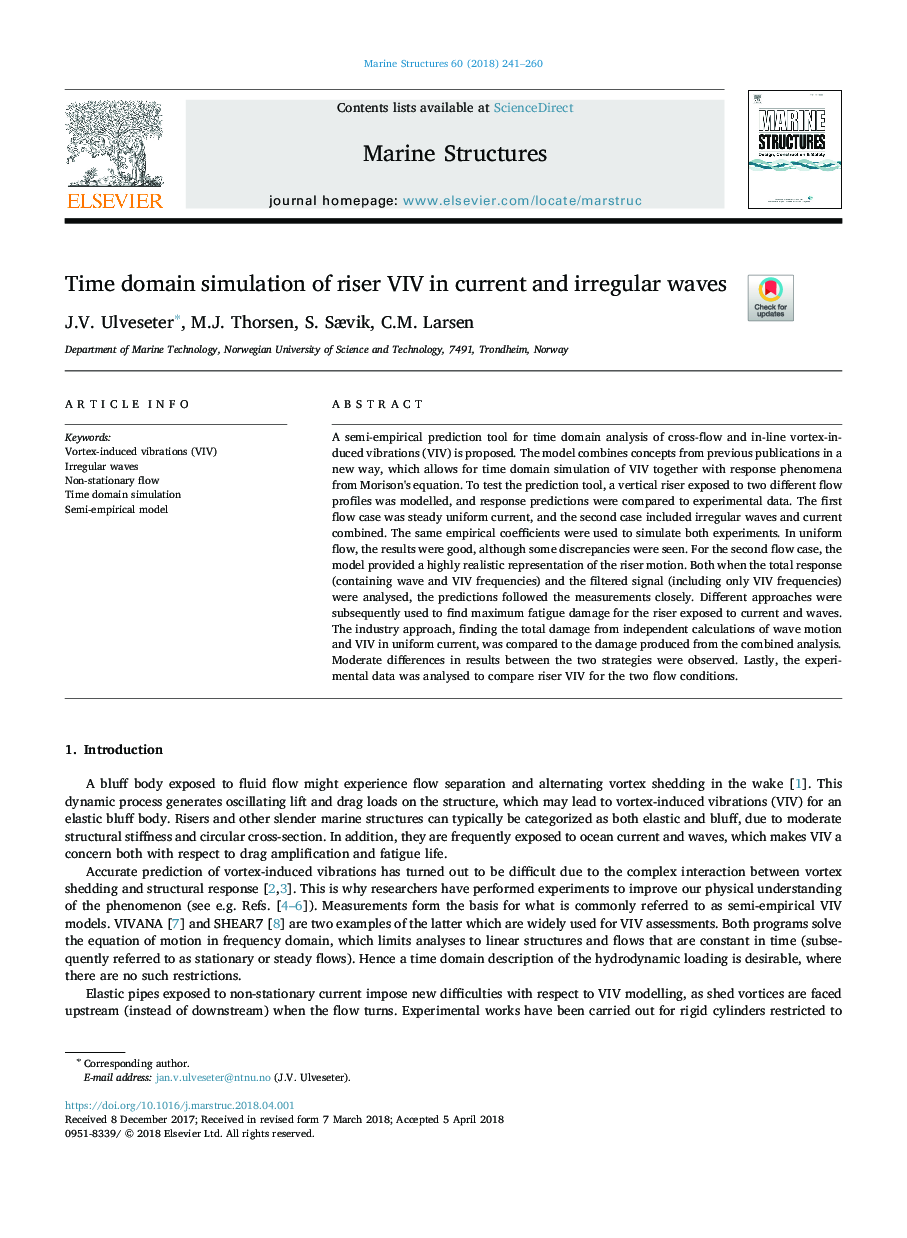| Article ID | Journal | Published Year | Pages | File Type |
|---|---|---|---|---|
| 6757952 | Marine Structures | 2018 | 20 Pages |
Abstract
A semi-empirical prediction tool for time domain analysis of cross-flow and in-line vortex-induced vibrations (VIV) is proposed. The model combines concepts from previous publications in a new way, which allows for time domain simulation of VIV together with response phenomena from Morison's equation. To test the prediction tool, a vertical riser exposed to two different flow profiles was modelled, and response predictions were compared to experimental data. The first flow case was steady uniform current, and the second case included irregular waves and current combined. The same empirical coefficients were used to simulate both experiments. In uniform flow, the results were good, although some discrepancies were seen. For the second flow case, the model provided a highly realistic representation of the riser motion. Both when the total response (containing wave and VIV frequencies) and the filtered signal (including only VIV frequencies) were analysed, the predictions followed the measurements closely. Different approaches were subsequently used to find maximum fatigue damage for the riser exposed to current and waves. The industry approach, finding the total damage from independent calculations of wave motion and VIV in uniform current, was compared to the damage produced from the combined analysis. Moderate differences in results between the two strategies were observed. Lastly, the experimental data was analysed to compare riser VIV for the two flow conditions.
Related Topics
Physical Sciences and Engineering
Engineering
Civil and Structural Engineering
Authors
J.V. Ulveseter, M.J. Thorsen, S. Sævik, C.M. Larsen,
